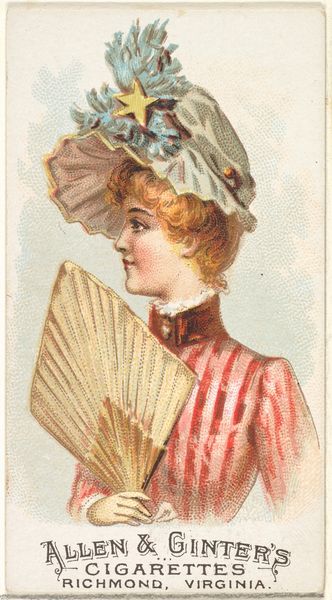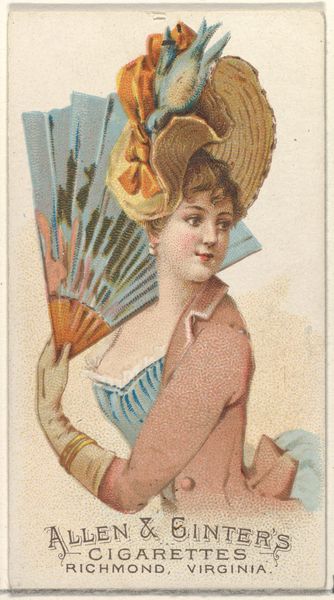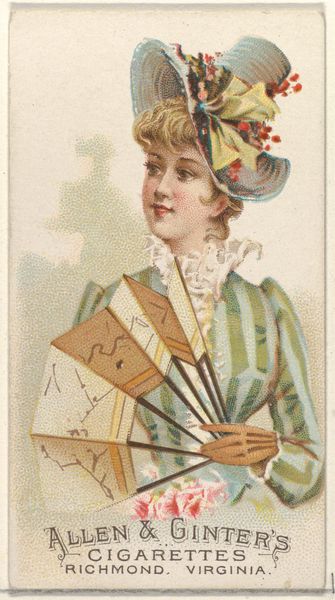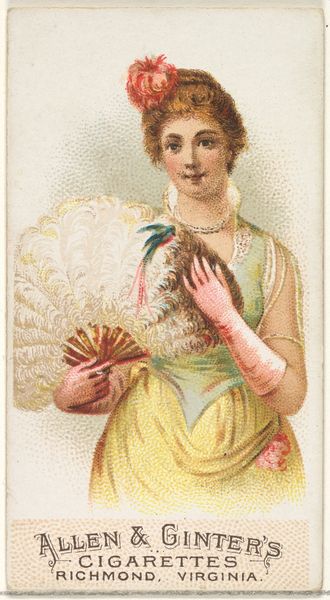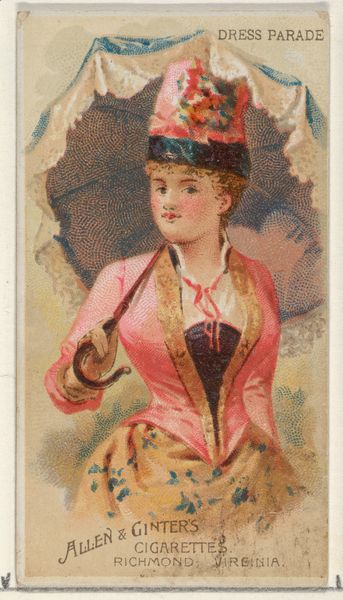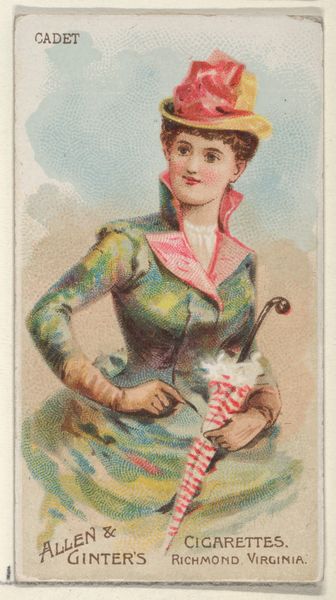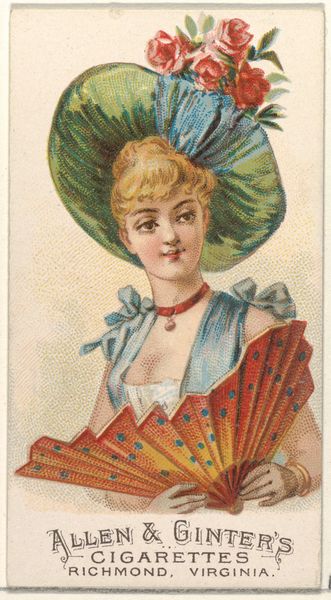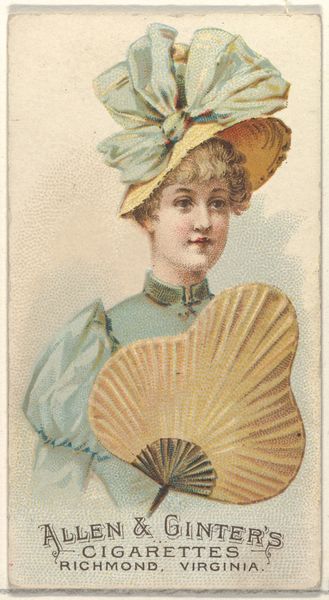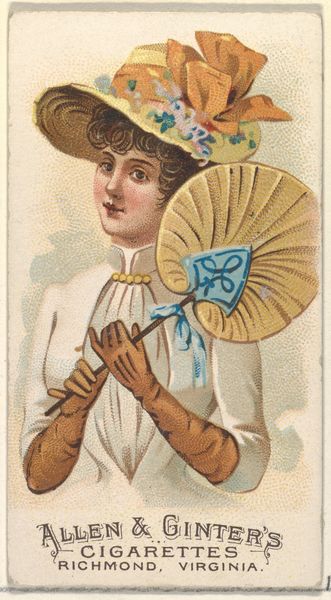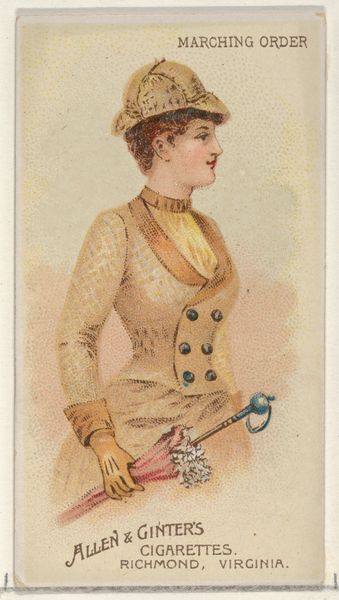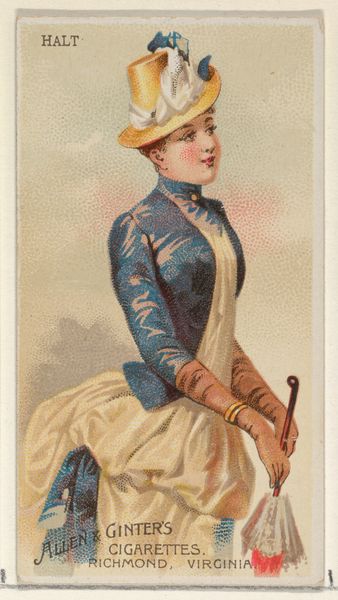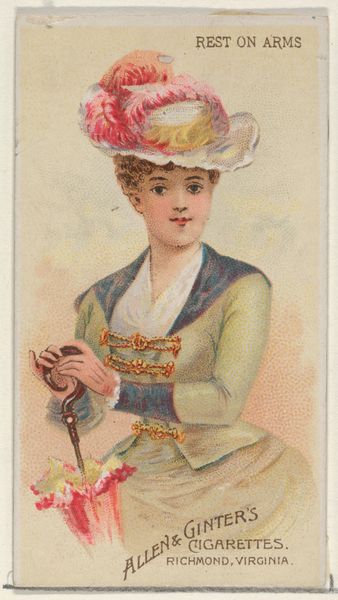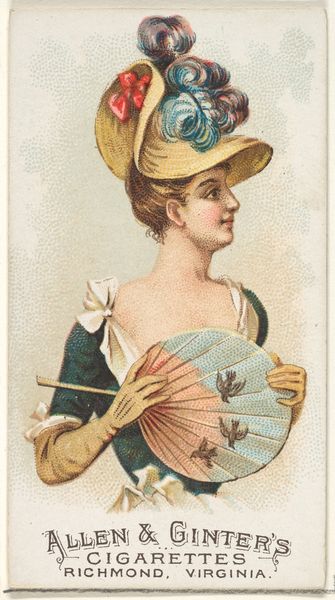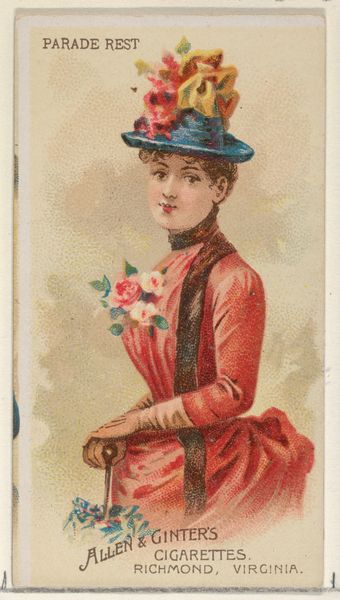
Plate 47, from the Fans of the Period series (N7) for Allen & Ginter Cigarettes Brands 1889
0:00
0:00
drawing, print
#
portrait
#
drawing
#
still-life-photography
#
art-nouveau
# print
#
impressionism
#
caricature
#
figuration
#
portrait reference
#
coloured pencil
Dimensions: Sheet: 2 3/4 x 1 1/2 in. (7 x 3.8 cm)
Copyright: Public Domain
Curator: Allen & Ginter produced this particular image, “Plate 47, from the Fans of the Period series,” around 1889. It was part of a set included in cigarette packs. What are your immediate thoughts? Editor: I find it… unsettling. There’s a disconnect between the elegant pose of the woman and its purpose. The image is undeniably pretty, but when viewed as a cigarette advertisement, the layers become problematic, glamorous propaganda encouraging a destructive habit, especially aimed towards the turn-of-the-century feminine ideal. Curator: Interesting. It’s a chromolithograph, meaning multiple stone printing plates were used, each applying a different color to create the final image. This allowed for a relatively inexpensive, mass-produced product, perfect for widespread distribution. It highlights how technical processes enabled certain visual cultures. Editor: Absolutely. And that mass production connects it directly to consumerism and labor practices of the time. Consider the exploitation inherent in the tobacco industry and the hands, likely of women and children, involved in creating these collectible cards that circulated mostly among a white, bourgeois male population. Curator: Good point. Thinking about the composition, the artist dedicated care to depicting textures – from the soft feathers of the fan to the patterned fabric of the dress. They chose specific materials to achieve these effects, revealing what aesthetic choices could be readily made during this period of mechanical reproduction. Editor: And those materials play into the construction of femininity at the time, the fetishization of delicate beauty while the social, economic and racial realities of the women actually producing these goods is erased. It’s all very intentionally created image with specific underlying ideologies. Curator: Indeed. Examining the artistic methods alongside its production tells us volumes about the commercialism and social norms present as industrialization progressed in the late 19th century. Editor: Right, the image becomes less about the "art" and more about the complex network of exploitation, representation, and capitalist ambition. Understanding that historical moment changes how we can possibly appreciate or contend with the image today. Curator: I agree. Dissecting its construction methods helps to understand those structures. Editor: Ultimately, analyzing these images allows for questioning ingrained ideologies of femininity, commodity and power from then, as well as considering how those echo into the present.
Comments
No comments
Be the first to comment and join the conversation on the ultimate creative platform.
